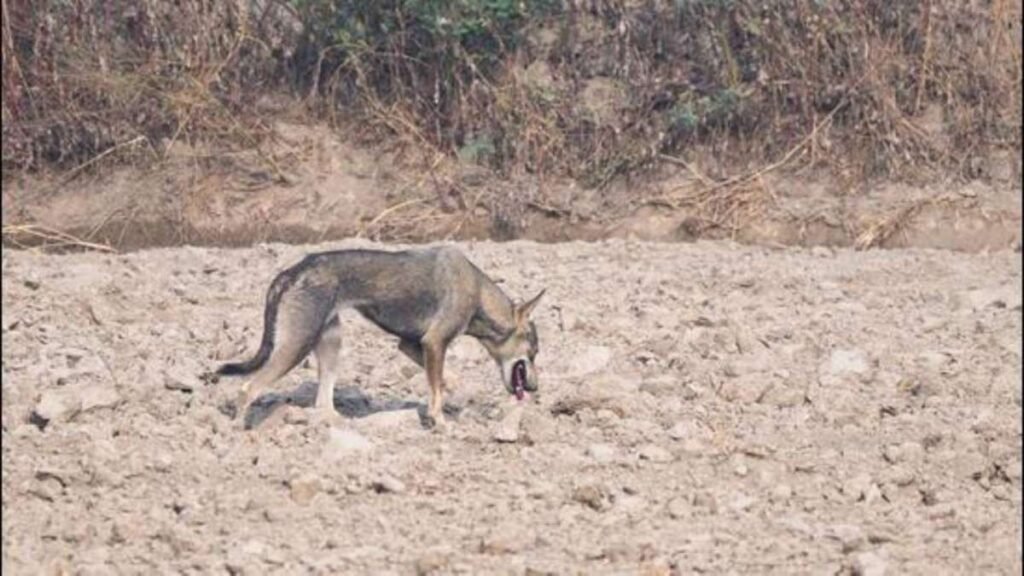The Indian grey wolf, known for its resilience and ability to travel long distances, has recently been documented in areas like the Chambal region, after being absent for years. While Delhi may seem an unlikely destination, large parts of neighbouring Uttar Pradesh support viable wolf populations.
In a city where ambition, chaos, and relentless pace often define daily life, a quiet, shadowy figure slipping through the tall grasses of the Yamuna floodplains has stirred a sense of wonder – and a little disbelief.
On an early Thursday morning, as Delhi bristled with its usual anger-infused traffic snarls while some feasted on the chole bhature breakfast, the day began differently for one gazing at a bank along the Yamuna.
A lone animal, calm and alert, padded silently along the riverbanks near Palla in north Delhi. It may well have been the Indian grey wolf – an elusive predator unseen in the capital for nearly a hundred years.
The possible sighting, captured by wildlife enthusiast Hemant Garg, has sparked excitement among experts. Garg, a 41-year-old businessman with a passion for tracking nocturnal animals, photographed the animal before it vanished into the riverine scrub.
“It had a dull grey coat and an unusual gait, not like any dog I’ve seen. As I moved closer, it slipped into the tall grasses,” Garg told a media outlet.
Wolves along the Yamuna after 1940?
If confirmed, this would be the first credible evidence of a wolf in Delhi since the 1940s. A 2014 report by forester GN Sinha on the Delhi Ridge noted that wolves, once common in the area, vanished decades ago due to shrinking habitats and urban expansion.
Experts like YV Jhala, a leading authority on Indian wolves, reviewed the photographs and found the animal “wolfish” in appearance. However, he cautioned that the tail posture and coat colour hinted at possible hybridisation with feral dogs. Without genetic analysis, we can’t say for sure. Hybridisation is becoming common as wild habitats shrink and stray dog populations rise,” he said.
The Indian grey wolf, known for its resilience and ability to travel long distances, has recently been documented in areas like the Chambal region, after being absent for years. While Delhi may seem an unlikely destination, large parts of neighbouring Uttar Pradesh support viable wolf populations.
Naturalist Surya Ramachandran, who has studied wolves closely, also assessed Garg’s photographs. “From the side profile, it looks like a wolf. It may have followed the Yamuna from as far as Chambal,” he said.
Wildlife conservationist Raghu Chundawat, too, found the sighting plausible. “I recall seeing one near the Delhi airport in the 1990s. Given their range, this animal could have travelled quite far.”
The Indian grey wolf typically thrives in grasslands and scrub forests, often living near agro-pastoral communities and feeding on livestock and small mammals. In Delhi’s past, wolves roamed the Ridge forests alongside hyenas, blackbuck, and even leopards. By the mid 20th century, they had disappeared.
Now, this single sighting, a brief encounter between a fast-disappearing predator and a sprawling, ever-changing city, offers a reminder of the wildlife that once thrived in Delhi, and perhaps, still endures in its quieter corners.
